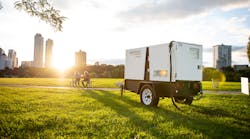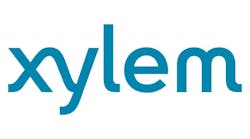RER talks with Generac about improved digital controllers, battery storage, generator sizing, dealing with COVID-19 and using telematics to lower costs.
RER: How, in your view, has generator technology improved in recent years? What have been some key advancements and how have they helped the rental company and the end user?
Generac: Digital genset controllers, as with every other microprocessor-based device, continue to improve every year. They are more accurate, capture more data and allow users to see more information through larger human machine interfaces and integration with telematics. These advances help rental companies and owners monitor the health of their equipment, track where it is located and, in most cases, made the genset easier to operate.
What are some of your key products you are excited about?
We are very excited about the redesign of our 25kVA Prime unit. Our team took time to focus on key areas that really matter to our customers. We have made TCO (total cost of ownership), durability, and versatility our main areas with this product.
Battery storage has become of much greater interest in recent years. Why is that, what are the benefits of energy storage technology?
Battery technology continues to improve, providing more capacity and longer-term storage. As performance has increased and prices have become more reasonable, green technologies are becoming more appealing to users as they strive to reduce carbon emissions for environmental reasons or financial incentives. Pairing a battery storage unit with a genset can reduce the amount of time the genset needs to run, and help with light loading of diesel generators, which can lead to wet stacking.
The National Oceanic and Atmospheric Administration is predicting an “above normal” 2020 Atlantic hurricane season. What should rental companies be doing to prepare for hurricane season in areas that are vulnerable to hurricane activity, and what are manufacturers such as yourselves doing?
In uncertain times, rental companies and manufacturers need to create strong relationships to support the end customers. Product availability and service become key areas in mission critical times such as natural disasters.
What advice do you have for general rental companies that want to expand both their fleet and their involvement in power gen rentals? What are the key areas of knowledge they need to emphasize?
Partner with an OEM that has the knowledge and resources to support them, before and after they decide to acquire gensets. Understanding the features offered by each OEM and why they are important is key to making the right decision, ensuring that you aren’t paying for features or options that you do not need. Making sure that you understand generator sizing is also very important. You want to make sure that you don’t over- or undersize the generator. Both can have a negative impact on performance for your customer and for the health of the machine.
Obviously COVID-19 has had a dramatic impact on all of our lives. What are the primary effects on the power-generation market? Obviously, events have come to a standstill, but how about the construction market, the rental market, the industrial market, the residential generator market?
From a rental market point of view, the primary effects of this is driving features in products to make them versatile for many different applications. Where once generators were needed for events, that utilization must have the flexibility to service many temporary site applications such as those being utilized for COVID-19 testing as an example.
The oil and gas markets have been hit hard. Do you have any expectations for this market area going forward as far as power generation needs?
The true needs of products always come to the forefront when uncertainty strikes. Users run their products longer and are looking for all ways to cut expenses in both capex and maintenance. How can we bring more value within our product offerings to our customers?
What kind of impact has the developments in telematics had on the power generation industry?
Telematics are not a new technology, but they continue to evolve as end user demand for data grows. Users are looking for more than run data and location. The trend is moving toward predictive analytics. They want to know when a failure is going to occur. As they pull more data points, they can model patterns and use that information to prevent or eliminate the cause of the failure. They are also using the data to develop a more detailed total cost of ownership for each piece of equipment.






